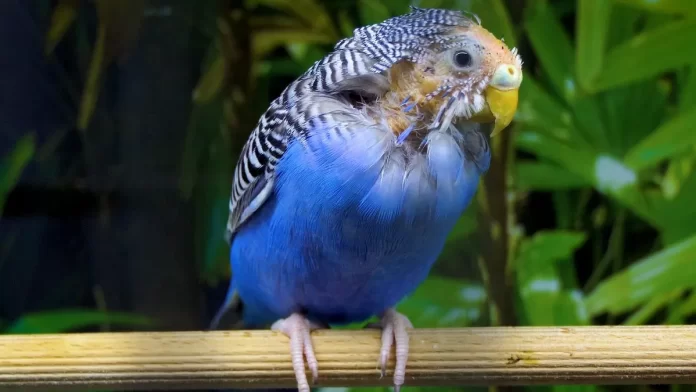Last Updated on November 4, 2023 by Fumipets
13 Types of Budgie; Colors, Varieties & Mutations
Budgerigars, often affectionately known as budgies, are small parrots with a wide array of colors, varieties, and mutations. These charming birds come in numerous shades and feather patterns, offering bird enthusiasts a diverse selection for their aviaries. Understanding the types of budgies, their colors, varieties, and mutations provides insight into the fascinating world of these beloved pets.
Types of Budgie
After dogs and cats, the budgerigar, or “Budgie,” is the third most popular pet worldwide. If you have ever touched one of these cute birds, you may see why. They are not only stunning avian specimens with vivid colorations, but they are also devoted and loyal pets that make wonderful companions.
If you’ve ever looked at budgies (also known as parakeets in certain regions of the globe), you’ve probably seen a variety of color variations and patterns on birds that vary significantly from one another. All of them are Budgies, but how many exactly? You may be surprised by the solution! Let’s examine this recognizable bird and the several types of budgie that are available in more detail.
The Two Main Types of Budgerigar
The classic Budgerigar and the English Budgie are the only two varieties of this bird, despite the fact that you have probably seen them in a variety of colors.
The only naturally occurring Budgie, the classic one, comes from Australia. They are all the same color: green and yellow with black stripes, and with blue, green, and black flight and tail feathers.
The English Budgie is not a species of bird that lives in nature. As a result, we have such a wide range of beautiful Budgie colorations! Instead, it was developed via breeding programs for the pet trade industry!
Color Variations of the English Budgie
The majority of Budgies with unusual colorations were produced in captivity. Up to 32 different color mutations have been produced via this breeding. It’s vital to remember that these are only distinct color variations and not separate breeds or species.
The two primary divisions of English Budgie color variants are white-based and yellow-based. To further enhance their colors, each of them may have zero, one, or two dark components. Let’s examine some of this stunning bird’s most popular color combinations in more detail.
White-Based Budgie Variations
1. Sky Blue Budgie
Sky blue is the lightest blue color option for Budgies when no dark elements are present. Technically, without the yellow, it is a green bird, leaving just the pale, sky blue coloring. Along with dark blue tail feathers, they also have vibrant purple spots on their faces.

2. Cobalt Budgie
There is just one dark component to this blue. Compared to sky blue, cobalt is a significantly deeper hue of blue. The brilliant purple cheeks and deep blue tails of these birds are still there.
3. Mauve Budgie
Mauve, which has two dark components, is the deepest blue hue for Budgies. It might have a blueish hue that makes it seem nearly grey. The cheeks are the most straightforward method to distinguish a Mauve from a Gray. Like the other blue variants, the Mauve Budgies will continue to feature vibrant purple cheeks and dark blue tails.

4. Gray Budgie
Budgie’s blue hue has completely disappeared, leaving the majority of its body gray. Their tail feathers have become black, but they still retain blue, gray, or blueish-gray cheek patches on their cheeks. Similar to blues, there are light, medium, and dark tones of gray.
5. Violet Budgie
The primary body color of a Budgie will be enhanced by the violet coloring, a darkening gene. The violet gene may produce both blue and green Budgies, but the blue Budgies are the most beautiful. Visual violet, an extremely deep hue of violet, may sometimes evolve from it.
6. White Budgie
White Budgies are exactly what their name suggests—all white. Pure white budgies are also prevalent without any extra colorations. However, they may sometimes contain accent colors in minor quantities.
7. Albino Budgie
Budgies that are albino lack any pigment, leaving them completely white. It’s interesting because they sometimes still contain dark aspects that don’t manifest themselves visibly.

Yellow-Based Budgie Variations
8. Light Green Budgie
This is a Budgie’s typical, natural color pattern. It is extremely brilliant because it lacks any dark components. However, deep inside their DNA exist blue and yellow components that when combined, produce green. Because of this, selective breeding has been able to create a wide variety of organisms.
9. Dark Green Budgie
This shade of green has only one dark component, making it significantly darker and less vivid. Dark green Budgies still have violet cheek patches, and their tail feathers are dark blue.
10. Olive Budgie
The presence of two dark components results in the creation of the deepest shade of green that a Budgie may have. Olive-colored Budgies tend to be more splotchy in appearance compared to typical green Budgies, which are a uniform, smooth shade of green. Olive Budgies have dark blue tail feathers and purple spots on their faces.

11. Gray-Green Budgie
This shade of hue closely resembles olive. The color of their cheeks and tails is what distinguishes them the most. Gray-green Budgies have black tail feathers and gray/blue cheeks.
12. Yellow Budgie
Yellow budgies have a very distinct appearance. They might be entirely yellow with no other colors, or they can have brilliant green spots on their undersides and still be largely yellow.
13. Lutino Budgie
This is the albino variant with a yellow-based hue. A lutino Budgie will have cheek patches that are white or silver and a more yellow tint overall.

Conclusion
You can see that there are an unexpectedly large number of Budgie variants available. Even though the standard Budgerigar’s only colors are green and yellow, selective breeding has produced all of these amazing color variants. You can definitely discover a Budgie that will exactly suit your personality given the wide range of alternatives available. After all, they make wonderful pets and are even capable of speaking, so they can keep you company.
Questions and Answers:
What are the different types of budgies based on their colors?
Budgies come in various colors, including the common green, blue, yellow, and white varieties. They can also exhibit combinations and shades in between, creating a colorful spectrum.
What are some popular varieties of budgies?
Popular budgie varieties include the Standard Budgerigar, Spangle, and Pied. Each variety has distinctive feather patterns and markings, making them visually captivating.
What are mutations in budgies, and how do they affect their appearance?
Mutations are genetic variations that alter budgies’ appearance. They can result in unique features like albino, lutino, or recessive pied birds, which have distinct color patterns and characteristics.
How can one identify the gender of a budgie based on its appearance?
Budgie genders can often be determined by observing their cere, the fleshy area above their beaks. Males typically have blue or purplish ceres, while females have brown, tan, or beige ceres. However, this method is not always foolproof.
Are there care differences among the various types of budgies?
Budgies generally have similar care requirements regardless of their color, variety, or mutation. They need a well-balanced diet, a clean environment, and mental stimulation. However, some varieties or mutations may have specific needs or predispositions, so it’s essential to research and cater to these requirements accordingly.
Exploring the various types of budgies, their colors, varieties, and mutations is an exciting journey for bird enthusiasts. These small parrots offer a kaleidoscope of options, each with its unique charm, making them a delightful addition to any avian lover’s home.


















